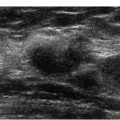1 Historical Review From 1960 to 1990, multiple large prospective randomized trials were performed to test if screen-film mammography reduced female mortality. The most commonly reviewed trials include the following (starting dates of the trials are in parentheses): the Health Insurance Plan (HIP) of New York (1963); the Edinburgh trial (1979); two Canadian trials—National Breast Screening Study (NBSS) 1 and 2 (both 1980); and four Swedish trials—Swedish Two County (1977), Malmö (1976), Stockholm (1981), and Gothenburg (1982). The HIP, Swedish Two County, Malmö, and Edinburgh trials all showed a statistically significant reduction in mortality (between 19% and 32%) in screened women compared with women who were not mammographically screened. The Stockholm and Gothenburg trials showed that there was 20 to 23% lower mortality in the screened populations, but these reductions were not statistically significant.1,2 The Canadian studies resulted in the worst performance for screening mammography. The Canadian NBSS-2, which included women 50 to 59 years of age, found only a 2% mortality reduction in the screened group after 13 years of follow-up, and the NBSS-1, which studied women ages 40 to 49, reported 7% more breast cancer deaths after 16 years.1–3 Proof of mortality reduction requires large numbers of participants. To obtain statistical significance, researchers have retrospectively combined the data from the previously described screening trials. A meta-analysis of all of these major trials plus four other case-controlled studies in 1995 found that there was a statistically significant (26%) reduction in mortality for women ages 50 to 74. No significant reduction in breast cancer mortality was identified in women ages 40 to 49.4 The results of this study reflected the general results of previous meta-analyses and supported further analysis of the data from younger screened women. Meta-analysis of the randomized controlled trials in 1997 found that there was a statistically significant reduction in mortality for women ages 40 to 74. Specifically, the reduction for women ages 40 to 49 was 18%; for women ages 50 to74, it was 24%. When only data from the Swedish trials were combined, this study found that the mortality reduction for women ages 40 to 49 was 29%.5 Since that time, other meta-analyses have reported similar statistically significant levels in mortality reduction for women ages 40 to 74.6,7 As digital mammographic machines matured, trials were performed on these units to discover if digital mammography was an effective screening tool. Early trials were performed primarily to obtain U.S. Food and Drug Administration (FDA) approval for specific digital mammography devices. Because screen-film mammography had already had a long history of research validation, the main goal of these trials was to demonstrate that digital mammography was substantially equivalent to screen-film technology. Hendrick led a multinstitutional trial testing the General Electric Senographe 2000D (GE Healthcare, formerly General Electric Medical Systems, Chalfont St. Giles, United Kingdom) involving 625 women who had both digital and screen-film mammograms. He reported that the sensitivity for digital mammography was 55% versus 53% for screen film mammography, and the specificity for digital was 68% compared with 70% for screen-film mammography. Although these differences were not statistically significant, digital mammography was associated with a 2% lower recall rate, which was statistically significant.8 Pisano led the multinstitutional trial to test the Fischer SenoScan (Fischer Imaging Corp., Denver, Colorado). This study involved a review of digital and screen-film mammograms from 676 women. The sensitivity of digital mammography was 66% compared with 74% for screen-film; the specificities were 67% for digital and 60% for screen-film mammography. These differences were not statistically significant.8,9
Stay updated, free articles. Join our Telegram channel

Full access? Get Clinical Tree






